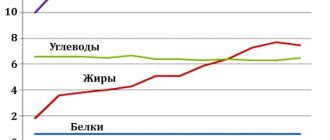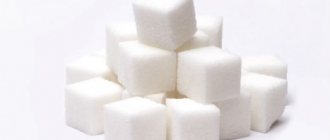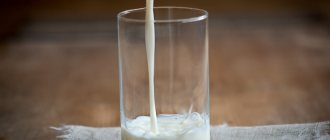Main characteristics of colostrum
It is typical for a nursing mother to produce colostrum even during pregnancy.
It is characterized by a yellow color because it contains a large amount of fatty components. Yellow milk is most often considered normal, especially if there are no additional negative symptoms.
The color of breast milk directly depends on the following factors:
- What mental or nervous state is the woman in at a given moment in time?
- The presence of bad habits in life, which are recommended to be eliminated completely.
- Smoked, spicy or too salty foods can also negatively affect the color of milk.
Main types of breast milk
Is there a normal breast milk rate?
There is no point in focusing on a certain color or consistency of breast milk for a young mother, since each woman has her own characteristics and is produced by the body specifically for her baby.
The normal color of milk is white, yellowish, with a bluish tint, creamy. Even if the milk is translucent or like water, it is rich in valuable and beneficial compounds for the baby. According to breastfeeding experts, breast milk should vary throughout the feeding period. This confirms that a woman’s body is adapting to the new requirements of a growing baby.
Breast milk is a rather complex product in composition, consisting mainly of water, which serves as a carrier for biologically active substances intended to ensure the growth and development of the child. Depending on the concentration of these substances and their ratio, its appearance may change. While pumping, a nursing mother may find that her breast milk has somehow become clear. Should I be worried about this? Does this mean that the milk has become less nutritious? Possible reasons for such changes are discussed in this article.
What color of human milk is considered normal?
It is generally accepted that it should be white. In fact, the shade is individual for every woman. The color may vary somewhat as various factors influence the nursing mother. Color depends on both internal and external reasons. This is why it is impossible to say exactly what color breast milk should be.
Colostrum
A few days before or immediately after delivery, the mother receives a thick, cream-colored secretion of the mammary gland with a specific smell - colostrum, which eventually replaces the familiar white mature milk.
Mature milk is divided into fore and hind milk. Changes in shade occur during application to the breast. At the beginning of feeding, a pale watery liquid comes out. This is foremilk. It is intended to quench the thirst of the baby. Foremilk acquires its light blue hue due to its reduced fat content.
The next portions will be fattier and thicker. This makes the color of the liquid more yellow. This is hind milk. It forms 20 minutes after application to the breast. Hind milk contains a large amount of fat, due to which the color is much whiter than fore milk. It is designed to satisfy the baby's hunger.
Gradually, the volume of mother's milk decreases, and the color becomes yellowish and resembles colostrum. This is due to the fact that as the baby grows up, other foods become the main food, but he still needs milk to strengthen his immune system.
What color should breast milk be?
First, we need to consider what the fluid secreted by the mammary glands of women should be. All mothers should study this topic carefully and find out how the product looks in the photo so that she knows whether her milk is normal.
The color and thickness of the secreted fluid depend on what stage of lactation the woman is at and whether external factors influenced her. For example, in the last stages of pregnancy and in the first days after birth, yellowish and sticky colostrum is released. In the first weeks there is white (with a slight tint of blue), but quite liquid transitional milk. Then comes the turn of mature milk - a thick, light (snow-white or cream) product.
In the last trimester and the first day after childbirth, a woman has a viscous, glue-like liquid coming from her breasts. It's called colostrum. The composition contains a lot of protein (4 times more than in mature breast milk) and very little lactose. The main feature is the huge number of immune bodies and antitoxins that the baby needs to form immunity and launch the digestive system.
The acceptable color of colostrum is yellow. The shade can be different - from light cream to reddish. If you strain it into a jar, a small white film will appear on the surface. Colostrum definitely cannot be brown, green, or pink - if it has this color, then you must immediately inform your doctor about it.
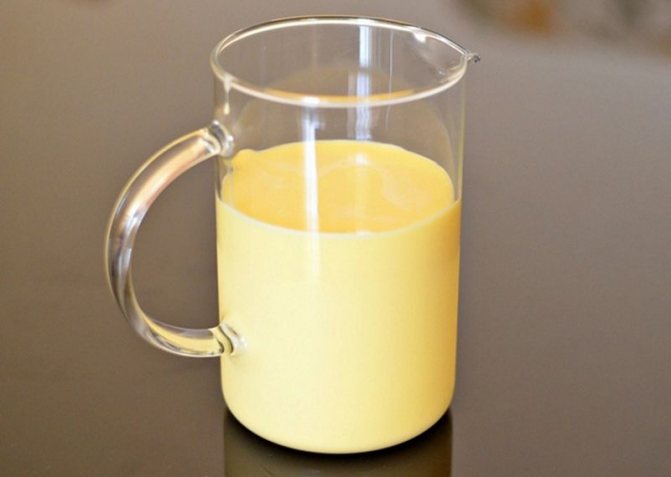
A couple of days after giving birth, a woman begins to produce real breast milk. In the first week, it is white with a bluish tint and quite watery, since it still contains a reduced amount of fats and carbohydrates (for a recently born baby they are still difficult to digest). From the second week, mature milk begins to flow. It should be thick and white.
It is important to know not only what breast milk from a healthy woman looks like, but also what it smells and tastes like. Normally, it should be quite fatty and sweetish (due to milk sugar - lactose). The smell is similar to regular cow's milk, but with light notes of vanilla. Neither the aroma nor the taste of milk should be sour or bitter.
Breast milk can be called smart, since it constantly adapts to the needs of a growing baby - it gives him exactly those elements that are required at one or another stage of his development. Even during one feeding, the composition of the liquid changes - first there is watery foremilk, which quenches the baby’s thirst, and then it changes to hind milk, which can satiate the child.
Foremilk is released within the first 5–7 minutes from the start of sucking (or artificial expression). It consists of 86–88% water and contains vitamins and microelements, proteins and lactose. Hind milk is richer in fat.
The difference between foremilk and hindmilk is not only in composition, but also in appearance. In the first case, the liquid will have a cold tint (bluish). The fattier product becomes pure white or slightly creamy.
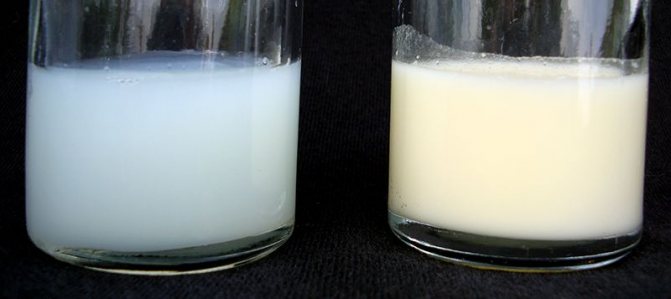
When a woman begins to wean a child from the breast (or he himself refuses to suckle), the mother’s body is rebuilt, gradually stopping lactation. After about 3 weeks from the last time the baby is applied to the nipples, the milk becomes involutional. Its feature:
- Less calorie content.
- The content of fat, protein, and lactose is reduced by 5–6 times.
- There are no macrophages (immune-strengthening protective elements).
In essence, involutional milk becomes identical to animal products or artificial formulas, so you can safely switch your child to them. The color of the liquid released from the breast in the last stages of lactation becomes whitish, and the consistency is watery. If such milk is expressed into a container, a sediment quickly forms and a transparent layer (water) appears on the surface.
Features of cessation of lactation
It is difficult to unambiguously answer the question of what color milk should be in the mature period. The characteristics largely depend on some characteristics of the woman’s body and the influence of external factors. Experts note that differences in basic characteristics also exist for foremilk and hindmilk.
During the period when a woman plans to stop lactation, milk may change its basic characteristics. It is used by the body to ensure the proper functioning of the immune system. The milk takes on a yellowish tint. That is why it will look like colostrum in appearance. In some cases, it becomes additionally thick.
Medications have a negative effect on breast milk. Food dyes also have a negative effect on color. That is why it is best to avoid them during breastfeeding.
It should be noted that when pumping for the first time, almost all mothers are surprised by the external characteristics of the liquid. First of all, it should be noted that it is radically different from cow milk. If the composition is allowed to stand, you will find that the liquid has separated into several layers. The fatty and high-calorie part is at the top - it is considered the most healthy. If milk has several layers, then it should not be considered spoiled. You can return the original external characteristics by shaking.
Physiology of lactation
The mammary gland is a heterogeneous organ that consists of glandular, connective, fibrous and adipose tissue. The glandular tissue is collected into lobules in which milk is produced. The breast tissue is riddled with ducts, which widen as they approach the nipple.
The hormone prolactin is responsible for milk production. Its concentration increases during pregnancy. It is because of prolactin that colostrum begins to be released in the second trimester. A high concentration of the hormone is maintained throughout lactation. It is released even if a woman has given up breastfeeding - so her lactation continues, although not to the same extent as a nursing mother.
We recommend reading: Enema solution at home, which one, cleansing, saline, for a child
The second important hormone is oxytocin. It regulates milk production. Oxytocin is released in large quantities when the mammary glands are stimulated. This hormone enhances the work of muscle fibers that carry fluid through the milk ducts. A sufficient amount of oxytocin protects against lactostasis. This hormone is also responsible for the expansion of the milk ducts during feeding - this is necessary so that a large amount of milk is released and it is more convenient for the baby to suck.
Interestingly, the feeling of fullness in the chest during lactation is precisely the work of oxytocin.
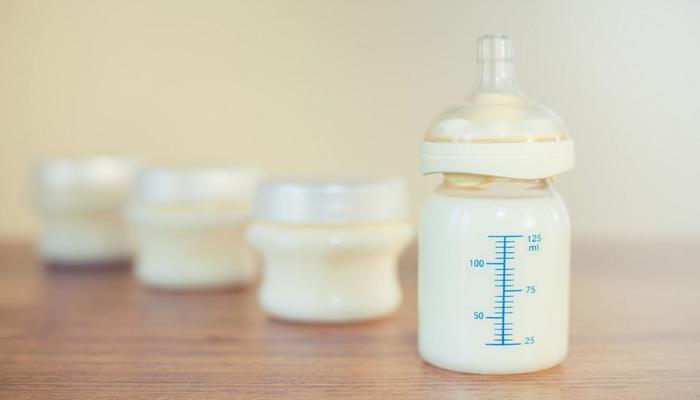
Why milk can take on different shades
There is usually no need to worry about the color of your breast milk, but if you are concerned, you can consult a breastfeeding support group leader or lactation consultant.
Milk does not always look the same as it changes composition both during feeding and throughout the day. As the baby grows, the composition of milk continues to change to meet the needs of the growing baby and provide everything needed at each stage of his development.
Thus, a mother's milk after 4 months is excellent for her 4-month-old baby, and after 6 months for her 6-month-old baby. (But breast milk is still better for feeding a baby than formula for children, so when using donor milk it is not necessary to look for a donor mother with a child of the same age - editor's note.)
We suggest you read: Why does a child have pink urine?
Expressed milk is separated when stored in the refrigerator.
It looks shocking, but it's actually normal. Unlike formula, breast milk has an uneven consistency, and even if expressed milk is simply placed on the table, it will gradually begin to separate.
Sometimes a thick layer of “cream” or fat may separate, sometimes a thin layer. In some cases, there are lumps in the milk or, conversely, it has a completely homogeneous structure.
The milk may be very yellow, very “creamy,” “blue and runny,” “watery,” greenish, or even tinged with pink or red. All these are absolutely normal phenomena and do not mean that the milk is spoiled.
Occasionally the milk turns pink or brown. Sometimes, as a result of a broken capillary or irritation on the surface of the nipple, a little blood gets into the milk, which gives it a pink tint, but does not harm the milk in any way. Sometimes this phenomenon is also called “rusty pipe syndrome” due to the similarity of milk to water that comes from an old rusty tap.
Please note that this blood often settles at the bottom of the milk container or carton, so if you do not want to give bloody milk to your baby, use only the top part of the milk, discarding it after the blood has completely settled.
Keep in mind that there are many variations of "normal milk" and what milk looks like in no way reflects its composition, especially its fat content.
What to do if a layer of cream appears in the milk during storage?
Before feeding, simply remove the container or bag of milk from the refrigerator and stir it with a gentle rotating motion. If fat has settled on the walls inside the container, you can heat it under running hot water.
The photos below show different options for what milk can look like.
Its color may change for physiological and pathological reasons.
- The first group of reasons includes the consumption of products containing dyes and natural pigments (beets, some berries).
- Pathological reasons that led to discoloration include diseases of the mother: the development of a bacterial infection, hemorrhage.
If a woman notices that in the first months of lactation the milk has acquired this color, there is no need to worry. This is normal.
However, sometimes a yellow color can indicate the development of inflammation. The mother develops additional symptoms:
- increased body temperature;
- weakness, malaise;
- bursting pain in the mammary gland.
These are manifestations of mastitis. Usually the disease is one-sided: discomfort occurs in only one breast.
Orange
This coloring often appears when drinking carbonated drinks containing red dye. A woman may also notice that her milk has changed after taking fresh beets and fruit drinks. This is an absolutely normal reaction that does not harm the baby’s health in any way.
Greenish
Doctors distinguish physiological and pathological reasons for this coloration. The first group includes the food factor: a nursing mother eats a lot of greens - spinach, sorrel, lettuce, seaweed. It is not surprising that the milk takes on a greenish tint. The violation does not harm the baby’s health, since vegetables and greens rarely lead to allergic reactions, but they can provoke an eating disorder.
Sometimes this shade can be one of the symptoms of purulent mastitis. With this pathology, the mother complains of severe and bursting pain in the chest, high temperature, and general weakness. The mammary gland becomes hard to the touch. When you try to express milk, a greenish liquid comes out.
bluish
The usual reason why milk becomes colored is due to the consumption of foods with blue food dyes. If you leave the expressed liquid for storage, it will turn white over time.
In addition, the foremilk has a bluish color. It has this color due to its low fat content.
Pink
This shade occurs for several reasons:
- Cracked nipples. A similar disorder often occurs in mothers whose baby does not latch onto the breast correctly when feeding. As a result, an admixture of blood is detected in the milk.
- Benign neoplasms in the breast. The tumor often forms during the lactation period.
- Nutritional factor. The woman eats a lot of beets and foods containing red pigment.
- Colonization of milk by bacteria Serratia marcescens. They are able to synthesize a bright orange or red pigment that colors the liquid and the breast pump.
Sometimes a change in milk color is not a symptom of illness in a woman. It happens that the color is affected by the food eaten by the nursing mother. True, for this you need to use a huge amount of colored product. Here's what can change the color of milk:
- A brownish tint occurs when overeating cocoa products and drinking dark soda (mainly Coca-Cola).
- Milk will acquire a tan and reddish color from eating foods with beta-carotene in excess (carrots, pumpkin).
- Milk gets its unnatural color from harmful dyes that are added to low-quality sweets and sodas.
- Milk can turn green from overeating broccoli, spinach, lettuce, celery, gooseberries, and peas.
We suggest you read: When to give complementary foods to an infant
It would be a mistake to assume that color changes from foods eaten are harmless. Firstly, it can provoke allergies in both the woman and the child. Secondly, poor nutrition affects the taste of the milk produced; the baby may refuse it and remain hungry.
It is important to note that if the color of milk changes, you should not attribute everything solely to poor nutrition. Even if the day before the mother ate some food that could affect the color of the breast fluid, you still need to play it safe and consult a doctor. This will make sure that the cause is not diseases that are dangerous both for the woman herself and for her child.
The main thing about breast milk
The composition, type and nutritional value of breast milk differs for each nursing mother. A woman’s body is designed to respond sensitively to the needs of her child, so milk is produced in optimal quality and quantity for a particular baby. And even if a mother suspects she has liquid breast milk, most likely there is no reason to worry.
Breast milk can change its composition and color repeatedly throughout the breastfeeding period:
- Colostrum, secreted in the first days after the baby is born, has a thicker consistency and a yellowish or distinct creamy tint. However, if you wait a few days, you can see that gradually thinner and lighter milk comes in its place, which is the norm;
- Foremilk (that which the baby receives in the first 5-20 minutes of each breastfeeding) replenishes the baby's need for fluid, and hind milk for nutrition. Accordingly, it differs in external features. The first is light and liquid, like white-tinted water, and the second is thicker, fattier and richer. Most often, mothers notice nominal foremilk, because... it arrives very easily, leaks and expresses. As a result, the woman begins to think that it is always so thin and pale and decides that she will supplement the baby with formula;
- With prolonged breastfeeding, milk begins to gradually change its color and consistency. If feeding continues longer than one and a half to two years, the milk becomes thicker, because its composition adapts to the needs of the child: it no longer so much nourishes the baby as provides him with immune protection;
- The color of the milk can also be affected by the food the mother eats. For example, some types of foods rich in carotene can turn it yellowish if included in the diet in large quantities.
Thus, the composition and appearance of a dairy product can change not only during the entire feeding period, but also within even one feeding! Therefore, do not worry that the milk used to be thicker and fattier, but has become clear, like whitish water. Moreover, do not give up breastfeeding in favor of formula because of this. Your baby needs your milk exactly as it is at the moment.
As you can understand, the color, consistency, richness and fat content of milk during breastfeeding are not constant characteristics. They may change under the influence of various factors, but the milk was and remains optimal in composition specifically for your child. Therefore, you should not rush to follow recommendations such as increasing the diet of butter, sour cream and other high-fat and high-calorie foods in order to increase the fat content and nutritional value of milk. Even without this, it fully meets the child’s needs. In addition, very fatty milk can cause digestive problems in the baby.
Each mother’s breast milk may differ in different parameters, each of which is a variant of the norm:
- by color: transparent or translucent, white, cream, yellowish, with a tint of blue;
- by thickness: watery, liquid, oily and thick.
Obstetrician-gynecologist I.Z. Anshukova: Mother's milk can change its composition throughout breastfeeding, throughout the day, and even within one feeding. Your baby grows and changes, and so do his needs. In order to satisfy them fully, the composition of milk also undergoes certain changes. So, the thickness, color, and richness of breast milk six months after the baby is born fully meet the needs of your six-month-old baby.
Differences between front and back product
Why is milk divided into two large groups and how is it different? Foremilk is located closest to the ducts, so it has a liquid consistency and transparent characteristics. The liquid consists of a large amount of vitamins, lactose and water. The baby needs it in order to fully satisfy its need for fluid.
Hindmilk will only be visible after twenty minutes of active suckling. When breastfeeding, it has a thicker structure and white color. The product contains the maximum amount of useful components that the baby needs to get enough energy.
Women should remember that the second breast should not be offered to the baby if he has not yet completely emptied the first. If the baby constantly receives only the front portion, the situation may result in digestive system disorder. These children additionally experience insufficient weight gain.
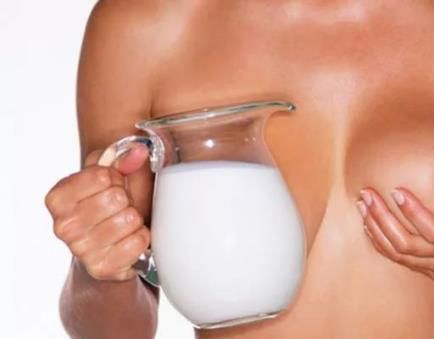
The composition should not have a pink or red tint
Features of breast milk
Each woman's milk differs in composition and organoleptic properties. It is adapted specifically for your baby. This means that if one mother’s milk is clear, and another’s milk is yellowish, then this is not yet a reason to doubt the low nutritional value of the lighter breast product.
The uniqueness and usefulness of breast milk lies not only in its nutritional value, but also in its ability to change throughout lactation. This happens under the influence of external factors, as well as with changes in the baby’s age, when his needs begin to change.
If we consider the periods during which breast milk will change in composition, color, consistency and this is considered normal, then the following stages are distinguished:

For each stage, changes in hue, clarity and composition are normal and should not be a cause for concern, except for sudden, painful changes during feeding.
What to do if the milk has changed color?
First of all, don't panic. Anxiety can harm lactation, and the baby also feels the mother’s tension. Secondly, it is necessary to find out the reason for the color change.
- If the day before a woman ate beets, carbonated drinks and other foods containing dyes, there is no need to worry. The pigment will not harm the baby and will soon be removed from the milk. However, it is still advisable to follow a diet for nursing mothers so as not to provoke an allergic reaction in the child.
- If a mother eats a lot of greens, trying to enrich her body with vitamins, the diet should be reconsidered. The fact is that excessive intake of such food can cause an eating disorder in a child.
- Do not forget about the physiological color of milk. The color does not have to be strictly white. It is assumed that it takes on a bluish, yellowish tint.
- If other symptoms appear simultaneously with the changed color of the milk (high fever, severe chest pain, the color becomes bright red), you should immediately seek help from a doctor. The specialist will conduct an examination, prescribe additional research methods and make a diagnosis, on the basis of which he will draw up a treatment regimen.
Breast milk can change its composition, color and taste during different lactation periods, completely adapting to the needs of the baby. It is not surprising that as a result of such changes it takes on a different shade. A young mother is concerned about any discoloration of the milk. Her worries are not always justified.

Nekrasova Anastasia Mikhailovna
Pediatrician, pediatric cardiologist
Ask a Question
What color can breast milk be?
Let’s immediately note one important point - color, fat content, consistency, saturation - there are indicators that are not constant. Changes in their characteristics occur for various reasons, but milk always remains the most optimal nutrition for infants. Women should not get caught up in idle talk about the quality of milk and start consuming fatty foods to increase its nutritional value and fat content. Nature has already made sure that the nutrient fluid produced by your body is a complete product for feeding the baby. In addition, artificially increased fat content can lead to digestive upset in a child.
READ ALSO: why there is no milk after childbirth: reasons
Milk parameters for each nursing mother are different, but all of them, as a rule, correspond to standard indicators. Breast milk is distinguished according to the following parameters:
- By color. The shade can be white or yellowish, blue or cream. The liquid itself is transparent or translucent.
- The consistency of milk can be fatty, liquid, watery or thick.
Experienced obstetrician-gynecologist Anshukova I.Z., speaking about the characteristics of breast milk, notes its ability to adapt its composition to the age of the child. In addition, it can change both during the week and during one feeding. As the baby grows, its nutritional needs also increase. The milk he receives in the first month and by half a year differs significantly in its composition. INTERESTING: when is it necessary to express breast milk?
Symptoms of diseases
Breast milk itself is never “empty” or non-nutritious - it always contains the substances the baby needs. Another thing is that a woman may experience a pathological process when harmful microorganisms, particles of pus, blood and other impurities enter the breast fluid, which make milk unsuitable for feeding children.
If a mother notices that her milk is very sour or bitter (taste and smell), has acquired an abnormal color, green streaks of pus or scarlet “threads” of blood are floating in it, she should stop breastfeeding. A full health check at the clinic is mandatory. You can resume breastfeeding only when your doctor allows it.
Blood in milk
Blood can get into the milk while still inside the breast - in this case, the nutrient liquid will turn pink. This happens for more or less harmless reasons (for example, when a vessel bursts from stress). But it is also a symptom of dangerous pathologies (including internal hemorrhage due to injury or a malignant tumor of the mammary glands).
Drops of blood can get into the milk from the outside of the breast. For example, due to cracked nipples or wounds caused by a child biting. Such injuries are dangerous because if the sore spots are not allowed to heal, severe inflammation begins and the risk of infection and suppuration increases.
Pus in milk
Purulent discharge does not dissolve well in milk, so it is unevenly colored and appears in the form of green and gray streaks. They give breast fluid a bitter taste, so the baby often refuses to drink it. But even a small amount of such “defective” food is dangerous - it may contain infectious agents.
We suggest you read what you need to do to stop breast milk
The color of breast milk changes depending on the stage of lactation. At first it is watery, almost transparent, then it becomes white or creamy. But what exactly the nutrient fluid secreted by a nursing woman’s breasts should not be is pink, brown, brown, gray or greenish. Such abnormal colors and the presence of foreign impurities clearly indicate disease.
First, we need to consider what the fluid secreted by the mammary glands of women should be. All mothers should study this topic carefully and find out how the product looks in the photo so that she knows whether her milk is normal.
The color and thickness of the secreted fluid depend on what stage of lactation the woman is at and whether external factors influenced her.
Then comes the turn of mature milk - a thick, light (snow-white or cream) product.
Colostrum color
In the last trimester and the first day after childbirth, a woman has a viscous, glue-like liquid coming from her breasts. It's called colostrum. The composition contains a lot of protein (4 times more than in mature breast milk) and very little lactose. feature is a huge number of immune bodies and antitoxins that the baby needs to form immunity and launch the digestive system.
The acceptable color of colostrum is yellow. The shade can be different - from light cream to reddish. If you strain it into a jar, a small white film will appear on the surface. Colostrum definitely cannot be brown, green, or pink - if it has this color, then you must immediately inform your doctor about it.
Mature milk
A couple of days after giving birth, a woman begins to produce real breast milk. In the first week, it is white with a bluish tint and quite watery, since it still contains a reduced amount of fats and carbohydrates (for a recently born baby they are still difficult to digest). From the second week, mature milk begins to flow. It should be thick and white.
It is important to know not only what breast milk from a healthy woman looks like, but also what it smells and tastes like. Normally, it should be quite fatty and sweetish (due to milk sugar - lactose). The smell is similar to regular cow's milk, but with light notes of vanilla. Neither the aroma nor the taste of milk should be sour or bitter.
A change in the color of breast milk may be a symptom of the development of the disease. This can only be diagnosed after pumping. Mommy should pay attention to the color and consistency. If there are any deviations, you should definitely make an appointment with a mammologist.

You should pump while taking medications.
Correct and alarming color of breast milk
The color of a breastfeeding woman's milk is individual. It depends on a large number of different factors. It should be noted right away that there is no connection between the color of a young mother’s milk and its calorie content. Moreover, many women noted a change in color during one feeding.
Normal color of breast milk
The composition and color of breast milk constantly changes. This process lasts throughout the entire lactation period, as the mother’s body adapts to the baby’s needs for nutrients, microelements and vitamins.
Many experts have noted that the color of baby food changes not only over the course of one day, but also during one feeding. All these changes are associated with the woman’s hormonal background, her diet, and the state of the nursing mother’s nervous system.
Immediately after birth, the color of the milk is most often yellow, with an orange tint often occurring. This color is explained by the fact that in the first few days after childbirth, the female body produces colostrum, that is, a special milk formula that is best suited in its composition to a newborn.
The similar color of such milk occurs not only due to the high content of a special protein, which is easily absorbed by the child’s body, but also due to the saturation of this natural product with beta-carotene. This substance is responsible for the development of the baby’s immune system and is an analogue of vitamin A.
Yellow or orange color in early breast milk of new mothers can also appear due to the lowest water content during the entire breastfeeding period. As soon as the volume of the liquid part increases, the product begins to acquire a paler color.
Two weeks after birth, the fluid released from the female breast becomes white. This phenomenon is possible due to a significant decrease in the percentage of proteins and a simultaneous sharp increase in fats and carbohydrates.
In addition, lactation itself increases significantly, a woman’s milk becomes 2-3 times more and, naturally, it loses its rich yellow color. It should be borne in mind that the volume of the liquid part also increases significantly.
Subsequently, the color of a nursing woman’s milk becomes less and less saturated, it acquires a pale blue tint. Various deviations in colors are also possible.
We recommend reading the article about the composition of breast milk. From it you will learn about the benefits of natural feeding, the biological and chemical properties of breast milk, and its benefits for the baby.
And here is more information about when milk comes in after childbirth.
What affects the color of breast milk
A variety of factors influence the color of breast milk. Most often, the change in shades is associated with a woman’s daily food.
The very composition of the products included in the diet of a nursing mother can cause changes in color. Here are some examples of how food affects the color of breast milk:
- Since most red vegetables and fruits are not recommended during lactation, a woman tries to compensate for her need for vitamins and other useful elements with yellow fruits. Most of them - pumpkin, potatoes or carrots - contain beta-carotene, which colors milk accordingly.
- If a young mother allows herself to include a large amount of fresh greens in her daily diet, then breast milk may acquire a greenish tint.
- Nursing mothers are not recommended to drink various carbonated soft drinks. If a lady often violates such recommendations, then her milk may turn pink or orange. This will depend on how much artificial coloring there is in the drink.
The color of the milk can be affected by medications taken by a woman, or simply by the presence of any chronic diseases.
Young mothers should remember that these changes are very rarely a symptom of pathology and most often do not affect the energy value of the child’s diet.
Watch the video about the first milk after birth:
Why is milk blue, bluish or yellow?
If a woman’s milk has a bluish or yellow tint in the first months after giving birth, this is a normal condition. Mothers usually notice the yellow color immediately after childbirth, and some women experience similar discharge from the nipples even in the last days before the birth of the child.
This is explained by the fact that the first breast milk is colostrum or a special milk substance rich in proteins that are easily digested by the newborn and vitamins.
It is thanks to the precursor of vitamin A that the yellow color appears in breast milk.
During the first 2 - 3 weeks, the composition of natural baby food changes significantly: the percentage of fats and carbohydrates increases, and the total volume of ordinary water in breast milk increases. As the concentration of beta-carotene decreases, the milk turns pale and turns from a yellow drink to first pure white and then bluish.
The child grows, the volume of the stomach increases, and his need for food increases all the time. The female mammary glands should increase milk production, and lactation should constantly increase.
This leads to the fact that the milk once again changes its structure and, accordingly, the color scheme. Carbohydrates begin to play an increasing role in this natural baby food product, and the liquid part of milk continues to grow, which is the reason for the blue or pale blue color.
Since there is no dramatic change in the composition of breast milk until the baby reaches 6-9 months, this pale blue tint remains the same all the time.
Of course, if during this period some external or internal factor influences a woman’s mammary glands, the color of the milk may temporarily change.
Purulent formations
A woman should know what color milk should be normally. The presence of pus is dangerous because it indicates the development of mastitis. Further feeding can be continued only after consulting a doctor, who will eliminate the possibility of negative effects on the child.
If it becomes impossible for a woman to regularly put her baby to the breast, then she should pump regularly. In this case, it will be possible to prevent stagnation and preserve the possibility of lactation in the future. Mastitis is prevented by regular latching of the baby, which ensures the outflow of fluid in sufficient quantities.
Blood in breast milk
A greenish color with blood is observed with strong hot flashes. In this case, it is impossible to exclude the possibility of small hemorrhages.
A negative situation can manifest itself under the influence of the following reasons:
- A woman constantly wears too tight underwear, which interferes with natural circulation in the glands.
- Cracks and damage regularly appear on the nipples.
- The presence of blood may be the first symptom of the presence of a tumor, which is malignant or benign.
In this case, it is allowed to continue feeding only after consulting a doctor. He will determine the reasons for the presence of blood in milk. Correctly selected therapy, which involves taking medications or surgery, will help eliminate the symptoms.
Way. Chemical
In inexpensive hair dyes you can find a special chemical called paraphenylenediamine. Only a few drops are enough to check. This substance will reveal hydrogen peroxide in milk, which allows milk to be given the desired density. Just add a few drops of this reagent to the milk and shake off the container. If the color changes to a blue tint, it means hydrogen peroxide has been added to the milk.
Interesting: 2 easy ways to make wine from grapes
